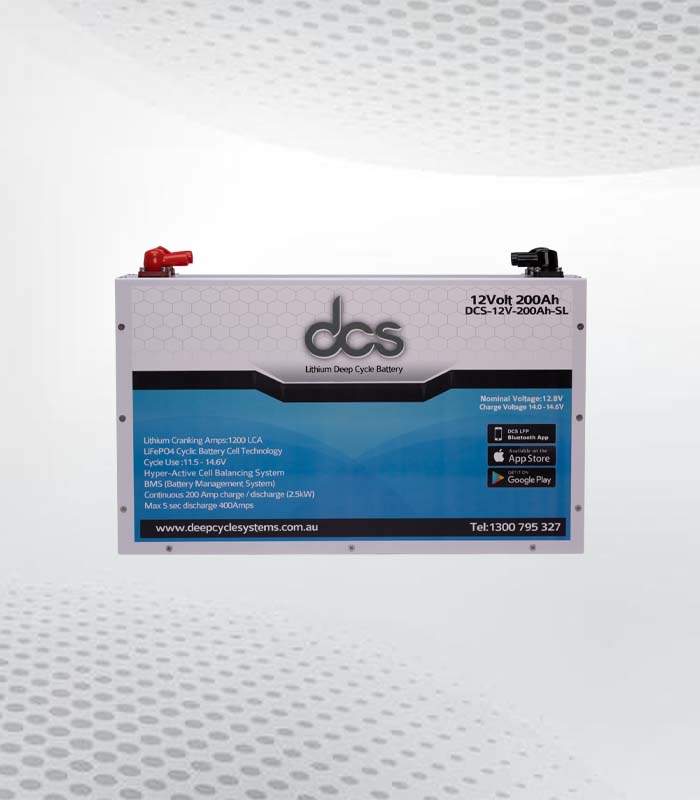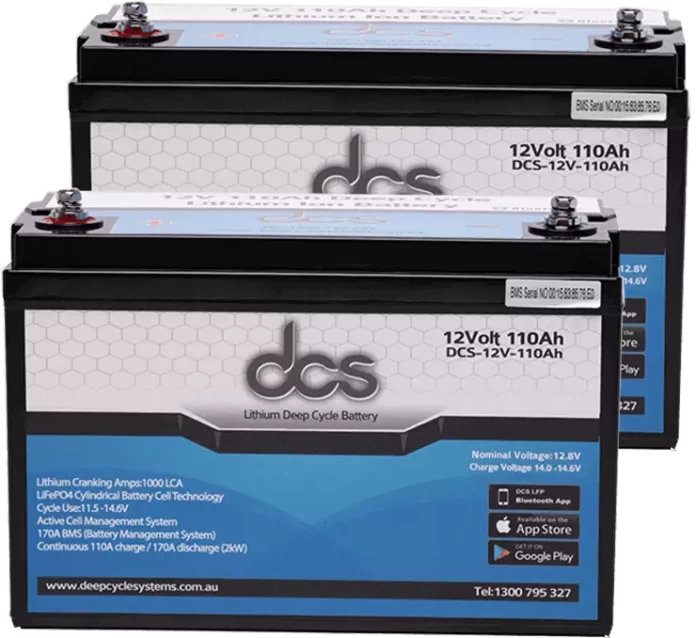The Lithium Cranking Batteries are revolutionizing the power industry. They offer unprecedented performance, reliability, and cost-effectiveness compared to their traditional counterparts. This game-changing technology enables greater efficiency, longer life cycles, and higher power output for various applications. In this blog post, we will explore the full potential of lithium-cranking batteries and the benefits they can bring to any power system.
The History of Cranking Batteries
The history of cranking batteries is a fascinating journey that spans over a century. It all started with the development of lead-acid batteries in the late 19th century. Though heavy and cumbersome, these batteries provided the necessary power for starting combustion engines. Over time, advancements in technology led to the creation of sealed lead-acid batteries, which were more reliable and required less maintenance.
However, the true revolution came with the introduction of lithium-cranking batteries. These lightweight and high-performance batteries have completely changed the game. They offer improved energy density, faster recharge times, and longer life cycles than their predecessors.
The evolution of cranking batteries mirrors the evolution of technology itself. As the demands of modern machinery increased, so did the need for more efficient and powerful batteries. Lithium-cranking batteries have risen to the challenge, providing the necessary power to start engines in various applications, from automobiles to boats to RVs.
Understanding the Science Behind Lithium-ion Batteries
Lithium-ion batteries, the powerhouses behind lithium-cranking batteries, are a fascinating marvel of modern science. To truly harness the full potential of lithium-cranking batteries, it’s important to understand the science behind their exceptional performance.
At the heart of lithium-ion batteries are the lithium ions themselves. These ions move between two electrodes – the anode and the cathode – through an electrolyte solution, creating a flow of electric current. This movement of ions allows the battery to store and release energy efficiently.
One of the key components that sets lithium-ion batteries apart is using lithium compounds as electrode materials. These compounds, such as lithium cobalt oxide or lithium iron phosphate, have high energy densities, allowing them to store more energy in a compact space. Lithium-ion batteries have a much lower self-discharge rate than other battery types, making them ideal for applications where long-term energy storage is required.
Another important aspect of lithium-ion battery technology is advanced control systems. These systems monitor and regulate the charging and discharging processes to maximize efficiency and prevent damage to the battery. The development of sophisticated battery management systems has greatly improved the safety and reliability of lithium-ion batteries.
The Benefits of Using Lithium Starter Batteries
Lithium batteries offer a range of benefits that make them a superior choice for power systems. First and foremost, their enhanced efficiency allows for more effective energy use, resulting in increased performance and longer run times. It is especially important for applications that require a reliable power source, such as vehicles, boats, and recreational vehicles.
Another key advantage of Lithium Starter Batteries is their longer life cycle. Traditional lead-acid batteries degrade over time, requiring frequent replacements and maintenance. On the other hand, lithium batteries have a significantly longer lifespan, reducing the need for replacements and saving you both time and money in the long run.
In addition, lithium-starter batteries provide a higher power output than their traditional counterparts. It means they can deliver the energy required to start an engine quickly and efficiently. It is particularly valuable when immediate power is essential, such as emergencies or high-performance vehicles.
Furthermore, lithium-starter batteries are lightweight and compact, making them easier to install and transport. Their small size and versatility make them an ideal choice for a wide range of applications, allowing for greater flexibility in design and installation.
Common Misconceptions About Lithium Batteries
Several common misconceptions surrounding lithium batteries can hinder people from fully embracing their potential. One common misconception is that lithium batteries are unsafe and prone to catching fire or exploding. While it is true that improper use or handling of any battery can be dangerous, lithium batteries are generally safe when used correctly. To prevent overheating and overcharging, they are designed with built-in safety mechanisms, such as thermal sensors and protection circuits.
Another misconception is that lithium batteries are not environmentally friendly. It is not entirely true. While it is true that lithium extraction and battery manufacturing have environmental impacts, lithium batteries have a longer lifespan and higher energy efficiency compared to traditional lead-acid batteries. Over time, they can offset their initial environmental impact through reduced resource consumption and emissions.
Some people also believe that lithium batteries are too expensive. While it is true that lithium batteries have a higher upfront cost compared to lead-acid batteries, their longer lifespan and lower maintenance requirements can make them more cost-effective in the long run. Additionally, as technology advances and production scales up, the cost of lithium batteries is gradually decreasing, making them more accessible to a wider range of users.
Choosing the Right Lithium RV Batteries for Your Needs
When choosing the right lithium R V batteries for your needs, there are several factors to consider. The first and most important is the capacity of the battery. It refers to the energy the battery can store and is usually measured in ampere-hours (Ah). Consider your power requirements and the duration you expect to use the battery without recharging. A higher-capacity battery will provide longer run times and greater power output.
Next, consider the voltage of the battery. Most RVs require a 12-volt system, but some may have a 6-volt system. Make sure to choose a lithium RV battery that matches the voltage requirements of your vehicle.
Weight and size are also important factors, especially if your RV has limited space or weight restrictions. Lithium Rv Batteries are generally lighter and more compact than traditional lead-acid batteries, making them a great choice for RV owners looking to save space and reduce weight.
Lastly, consider the charging and discharging capabilities of the battery. Look for batteries that have high charge acceptance rates and low internal resistance. It will allow for faster charging and discharging, maximizing the efficiency of your power system.
Maintaining and Caring for Lithium-Cranking Batteries
Proper maintenance and care are crucial to ensuring your lithium-cranking batteries’ longevity and optimal performance. By following a few simple guidelines, you can maximize the efficiency of your power system and enjoy the full benefits of lithium technology.
First and foremost, avoiding overcharging or over-discharging your lithium-cranking batteries is important. It can lead to permanent damage and reduced lifespan. Use a high-quality battery charger specifically designed for lithium batteries and follow the manufacturer’s charging voltage and current recommendations.
Regularly checking the state of charge is also essential. It can be done using a battery monitor or voltage meter. Remember that lithium batteries have a flat discharge curve, meaning the voltage will remain relatively constant until the battery is almost fully discharged. It is best to recharge your battery before it reaches a low charge to maximize its lifespan.
Proper storage is another key aspect of maintaining lithium-cranking batteries. If you are storing your batteries for an extended period, charge them to around 50-60% of their capacity and store them in a cool, dry place. Avoid exposing them to extreme temperatures, which can negatively impact their performance and lifespan.
The Revolution of Lithium Marine Batteries in Automotive
The revolution of lithium-marine batteries in the automotive industry has completely transformed how vehicles are powered. With their exceptional performance and numerous advantages, lithium-marine batteries have quickly become a game changer in the power industry.
Traditionally, vehicles relied on heavy lead-acid batteries to start their engines. These batteries were bulky, required frequent maintenance, and had limited power output. However, all of that has changed with the introduction of Lithium Marine Batteries.
Lithium batteries offer a higher power output and faster recharge times, allowing vehicles to start more efficiently and reliably. It is particularly crucial for marine applications, where immediate power is essential for safety and performance.
In addition to their increased power output, lithium batteries are much lighter and more compact than their lead-acid counterparts. This saves valuable space in vehicles and reduces overall weight, improving fuel efficiency and handling.
FAQ’s
1. Are lithium cranking batteries safe?
Absolutely! While any battery can be dangerous if mishandled, lithium-cranking batteries are designed with safety features to prevent overheating and overcharging. They undergo rigorous testing and adhere to strict industry standards to ensure reliability and safety.
2. How long do lithium-cranking batteries last?
Lithium-cranking batteries have a significantly longer lifespan compared to traditional lead-acid batteries. Proper care and maintenance can last up to 10 years or more. It means fewer replacements and lower maintenance costs in the long run.
3. Can lithium-cranking batteries be used in all applications?
Yes! Lithium-cranking batteries are versatile and can be used in various applications, including automobiles, boats, RVs, and more. They provide the necessary power to start engines quickly and efficiently, making them ideal for any power system.
4. Do lithium-cranking batteries require special charging equipment?
Yes, using a high-quality battery charger specifically designed for lithium batteries is important. It ensures the proper charging voltage and current, maximizing the efficiency and lifespan of the battery.
Conclusion
As we conclude our exploration of lithium-cranking batteries, it’s clear that this game-changing technology has revolutionized the power industry. From their exceptional performance and reliability to their cost-effectiveness, lithium-cranking batteries offer unprecedented benefits. Lithium-cranking batteries have it all, whether you’re looking for increased efficiency, longer life cycles, or higher power output. With their lightweight and compact design, they can be seamlessly integrated into various applications, from automobiles to boats to RVs.

